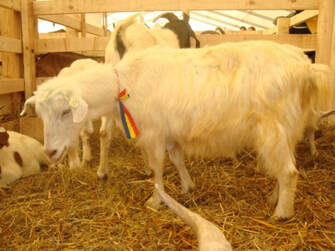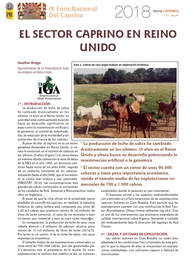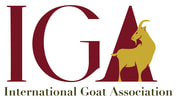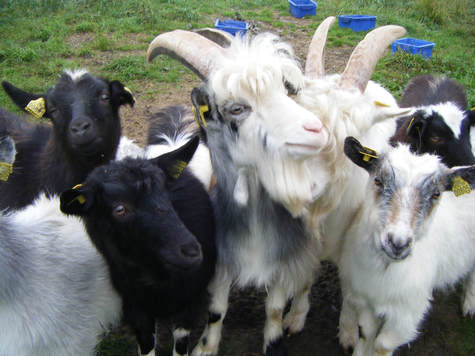|
Mahmoud Vatankhah (1), Nader Papi (2), Farhad Mirzaei (2)
(1) Animal Science Research Department, Chaharmahal and Bakhtiari Agricultural and Natural Resources Research and Education Center, AREEO, Shahrekord, Iran. (2) Agricultural Research Education and Extension Organization (AREEO), Animal Science Research Institute of Iran, Karaj. History of goat breeding in the province There are more than seven thousand years of history of animal husbandry in the Chaharmahal and Bakhtiari provinces. Perhaps the start of animal husbandry in this province was by pastoralists utilizing access to forage sources for livestock. Small animals (sheep and goats) were the focus in these provinces. The Bakhtiari area is where humans domesticated animals and plants for the first time. Also, some animals, especially goats, were tamed for the first time in the mountains of Bakhtiari. Geographic distribution areas The Bakhtiari black goat breed is one of the most popular in Iran. Although this breed is distributed across provinces in the Zagros Mountains, this population is mainly located in the western and southwestern parts of Iran, especially in the Chaharmahal and Bakhtiari, Lorestan and Khuzestan provinces.
0 Comments
 Special thanks to Dr. Stela Zamfirescu, Country Representative for Romania, for sending in this report. 1) Introduction In Romania, goat breeding represents an essential branch of zootechnics and has an old tradition and considerable economic importance. Goat breeding is also an activity with a long tradition of providing milk, meat, and processed products to the population. A third of the country's employed population works in agriculture, which situates Romania well above the 5.9% average of the EU countries. All these elements place Romania among the nations with high agricultural potential (above 30%). In 2019, Romania was third in terms of small ruminants. Currently, the goat sector counts over 2,045,000 heads, of which 1,320,000 are breeding goats, and 200,000 are mated juveniles, which led to an increase of the total number by 5.4% compared to 2018. Goat breeding belongs entirely to the private sector. The animals are reared in rural areas because there are favorable conditions for their breeding. They are also raised because of the higher demand from consumers. Of the total number, 83% of goat farms have up to 10 goats, and they also represent most of the total number, of over 37%. The strong points of goat breeding in Romania are determined by:
Written by Prof. Stela Zamfirescu, IGA Country Representative for Romania
Founder and Honorary President of ANCC CAPRIROM The favorable conditions for the breeding of small ruminants in Romania determined the continuous development of these species. Goats continue their numerical development, as the leading milk suppliers. This increase is determined, on the one hand, by the visible decrease in dairy cows, and on the other hand, by consumers’ awareness of the benefits of milk and goat milk cheese. At the beginning of 2019, the total number of goats exceeds 2 million, of which the total number of females was 1,715,000 heads, with an increase of 117,365 heads, which represents a weight of 7.3%, compared to 2017. A recent analysis of the National Agency for Animal Husbandry mentions a new aspect regarding the breed structure of goats. The native breeds raised in Romania are the Carpathian and Banat White. However, due to the massive imports, over the last ten years, of specialized dairy breeds, namely Saanen, Alpine and Anglo-Nubian, the structure of these breeds has changed dramatically. 1. Introduction
In the United Kingdom, the production of goat milk has changed drastically in the last ten years. The industry is continuously looking for significant future developments in areas such as artificial insemination and genomics, disease control, mortality reduction and protocols for rearing kids. Nonetheless, the goat industry is not a notable livestock sector in the United Kingdom, as evidenced by the evolution in the number of animals during the last 25 years (Figure 1). According to FAO census data, the total number of animals was at a maximum in 1990, followed by a continuous decline until the beginning of the 2000s. After that, the number of heads showed an upswing with some peaks and valleys, and a linear increase from 2010 to 2016 (FAOSTAT, 2016). The largest concentrations of commercial goat operations are found in York, Somerset and Worcestershire counties, all of them located in England.  DESCARGAR DESCARGAR Heather Briggs, Representante de la International Goat Associations en Reino Unido INTRODUCCIÓN La producción de leche de cabra ha cambiado drásticamente en los últimos 10 años en el Reino Unido. La actividad está continuamente mirando hacia un desarrollo significativo en áreas como la inseminación artificial y la genómica, el control de enfermedades, la reducción de la mortalidad y los protocolos de crianza de los cabritos. A pesar de ello, el caprino no es un sector ganadero destacable en Reino Unido, si vemos la evolución en el número de cabezas en los últimos 25 años (Figura 1) el censo marca un máximo donde comienzan la serie de datos de la FAO en el año 1990, un descenso continuo hasta inicio de los años 2000, seguido de un aumento constante de las cabezas, sobretodo hasta el año 2008, que el incremento se vuelve más errático y casi estancado (FAOSTAT, 2016). Las concentraciones más grandes de cabras comerciales se encuentran en los condados de York, Somerset y Worcestershire, todos ellos en Inglaterra. Written by Mouad Chentouf, IGA Regional Director for North Africa*
INRA – Regional Center of Tangier This article was edited in collaboration with Francisco de Asís Ruiz Morales, IGA Regional Director for Western Europe, and translated by Jean-Marie Luginbuhl, IGA Secretary-Treasurer.
Introduction With an estimated number of 8 million heads in the 70s, the Morocco goat sector currently numbers 6.2 million animals. This significant drop in number is due to the years of drought that the country experienced during the 1980s, but also to the abandonment of this activity towards other more profitable agricultural activities. Hello, goat lovers throughout the world!
I was appointed Country Representative (CR) of the International Goat Association for Japan in May 2018. Goat raising has become fashionable in recent years in my country, although the population of goats is only around 20,000. Goat keepers raise goats not only for dairy and meat purposes but also for weeding, education, companion animals, etc. Nonetheless, goat raising in Japan is facing some issues. One of these issues is to establish a feeding standard for goats raised in Japan. As Japanese standards for nutrient requirements of goats do not exist at present, goat keepers have been using the nutrient requirement tables published by the National Research Council (NRC) for feeding goats. The NRC requirements, however, sometimes do not seem to fit Japanese goat conditions. The Japan Goat Network, the only national organization for goat lovers in Japan, has initiated collecting references and is in the process of creating a temporary feeding standard. Complete feeding standards will be established for goats in Japan in the near future. The New Zealand (NZ) dairy goat industry is just a blip on the international market for the amount of milk produced. Asia produces over 217,000 tons times more milk than Oceania (Faostat 2013).
However, the NZ dairy goat industry has become more prominent on the international market in the last five years and is presently the most developed of the NZ goat industries compared to the meat and fiber goat industries. The present domestic market is small and mainly consists of cheeses, yogurt, UHT, whole milk, milk powder and ice cream sold at local farmers markets and supermarkets. There may be future growth in the domestic markets with the changing palate of New Zealanders. Written by Angelika Stemmer, IGA Country Representative for Bolivia
San Simon University, Cochabamba In Bolivia, goats are raised almost exclusively by smallholders, who practice farming, animal holding, and other activities. Smallholders don’t consider goats the most important part of their work because other animals and crops can contribute more in terms of financial revenue. Nevertheless, goats have their value in difficult years, when crops fail or after natural disasters. They are the one species which manages to survive with little loss and they recover more rapidly. Accordingly, most goats are found in marginal areas, the arid and semi-arid zones which lack infrastructure. Written by Ylva Persson, IGA Country Representative for Sweden
Associate State Veterinarian, National Veterinary Institute, Sweden Goat farming in Sweden is a remnant from traditional agriculture. In previous times, this was an important activity for the rural population and was based on an extensive system. Today, there is growing interest in local food production, both among consumers and producers. Most artisan farm dairies in Sweden keep dairy goats, while cows and sheep are less common. The main purpose of the production is cheese, but there is growing interest and demand for other products, such as meat, butter, raw milk, ice cream, etc. These dairy farms contribute to rural development by producing gastronomic products that can be served by local restaurants and hotels. They are also targets for tourism and create important work opportunities in villages, especially for women. |
IGA Blog
The International Goat Association promotes goat research and development for the benefit of humankind, to alleviate poverty, to promote prosperity and to improve the quality of life. Archives
May 2024
Categories
All
|
|
International Goat Association
2516 Millbrook Rd., Little Rock, AR72227 USA email: [email protected] -454-1641 |


 RSS Feed
RSS Feed